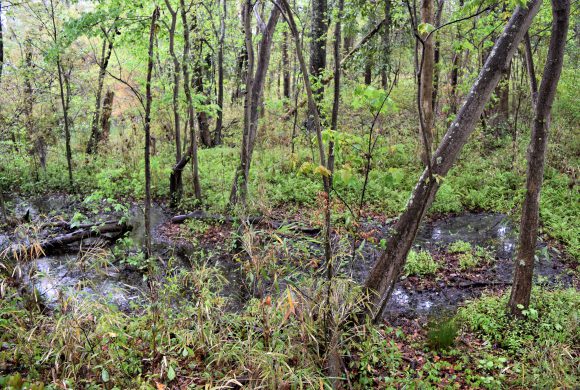 This study, completed in 2008, was one of the first wetland monitoring projects conducted by staff from the NC Division of Water Quality (now named the Division of Water Resources). Headwater wetlands were chosen as the initial wetland type to monitor because these systems are a very important natural resource found in the highest reaches of watersheds across the entire state. Maintaining the ecological integrity of these headwater wetland systems is necessary not only to protect wildlife habitat but also to protect the water quality of the entire watershed downstream.
This study, completed in 2008, was one of the first wetland monitoring projects conducted by staff from the NC Division of Water Quality (now named the Division of Water Resources). Headwater wetlands were chosen as the initial wetland type to monitor because these systems are a very important natural resource found in the highest reaches of watersheds across the entire state. Maintaining the ecological integrity of these headwater wetland systems is necessary not only to protect wildlife habitat but also to protect the water quality of the entire watershed downstream.
The NC DWQ conducted a monitoring effort for two years in 11 Coastal Plain and 12 Piedmont headwater wetlands, ranging in condition from disturbed urban headwater wetlands to undisturbed natural wetlands. Piedmont headwater wetlands tended to be small bowl-shaped wetlands that graded into narrow intermittent or perennial channels while Coastal Plain headwater wetlands were flatter and wider systems. Headwater wetlands are often impacted by road crossings and ditches (especially in the Coastal Plain) that have the capacity to alter hydrology, water quality, and habitat structure. Impacts to headwater wetlands and their watersheds can be especially damaging since headwater wetlands affect downstream aquatic resources.
For this project, monitoring methods were developed for wetland water quality, hydrology, soils, amphibians, macroinvertebrates, and plants. Assessments of disturbance level for each wetland were determined using the Ohio Rapid Assessment Method (ORAM) and the Land Development Intensity Index (Brown and Vivas 2003).
Natural Vegetation of North Carolina Headwater Wetlands
Water in Coastal Plain headwater wetlands was more acidic and had higher levels of calcium and magnesium, most likely due to regional soil differences. Natural headwater wetlands were forested with mature trees, primarily hardwoods, with red maple, sweetgum, and tulip poplar dominating in both the Coastal Plain and Piedmont regions. Other common tree species in the Piedmont included black gum, green ash, and willow oak while swamp tupelo, loblolly pine and sweet bay were more common in the Coastal Plain. Coastal Plain headwater wetlands tended to have a denser coverage of shrubs and understory trees while Piedmont headwater wetlands had a more diverse and denser coverage of herbaceous plant species. A strong correlation was observed between wetland condition (as represented by ORAM and LDI) and vegetative community quality.
Aquatic Animal Life in North Carolina Headwater Wetlands
A diverse array of amphibian and macroinvertebrate species can be found in headwater wetlands. Many amphibian species require the fish-free conditions that undisturbed headwater wetlands provide. Sampling for this study resulted in detection of 24 species of amphibians (15 in the Coastal Plain and 18 species in the Piedmont), 5 of which require fish-free conditions. This study also found 246 macroinvertebrate taxa (160 in the Coastal Plain and 175 in the Piedmont).
The most common macroinvertebrate orders (families) in headwater wetlands of both the Coastal Plain and Piedmont were Amphipoda (Crangonyctidae), Cyclopoida, Diptera (Chironomidae), Haplotaxida, and Isopoda (Asellidae). The class Ostracoda, order Podocopida and family Naididae (part of the order Haplotaxida) were also common in the Coastal Plain headwater wetlands. OrderVeneroida (especially Pisidiidae) and family Tubificidae (part of the order Haplotaxida) were also common in the Piedmont headwater wetlands.
Amphibians were detected using a variety of methods, including live traps.
Amphibian species found in North Carolina headwater wetlands during this study
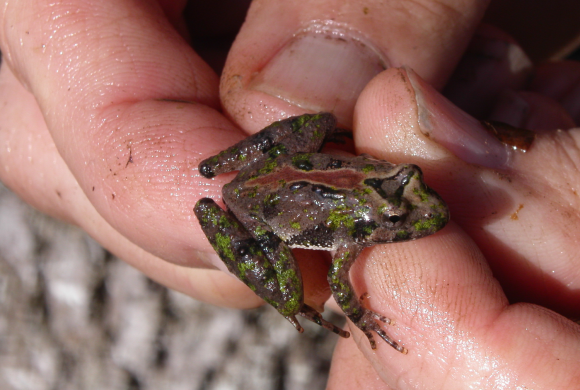 Cricket frog
Cricket frog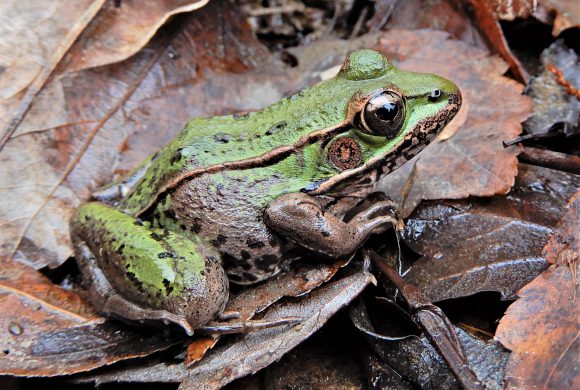 Southern leopard frog
Southern leopard frog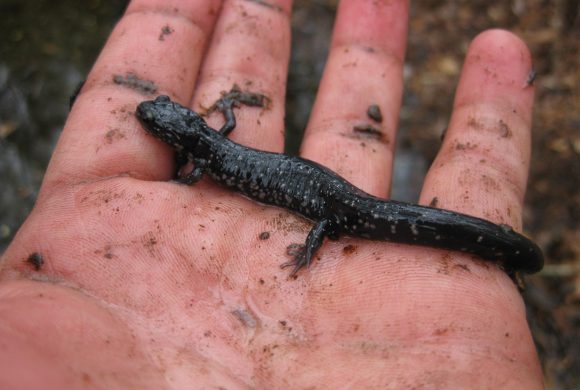 Northern slimy salamander
Northern slimy salamander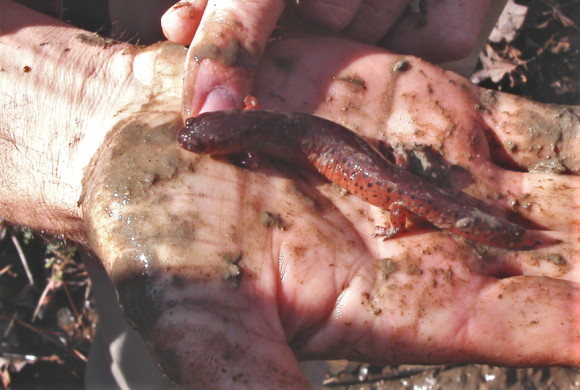 Red salamander
Red salamander
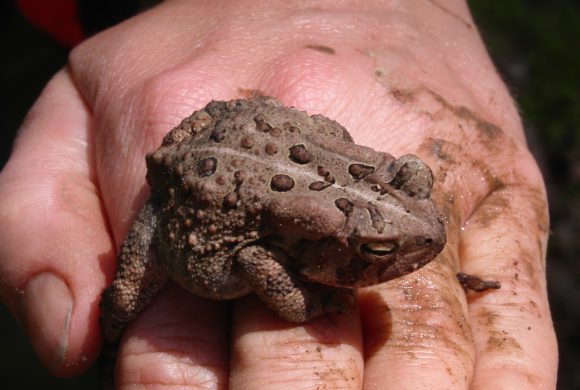
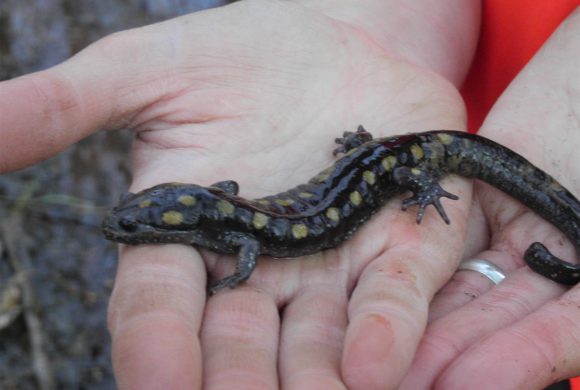
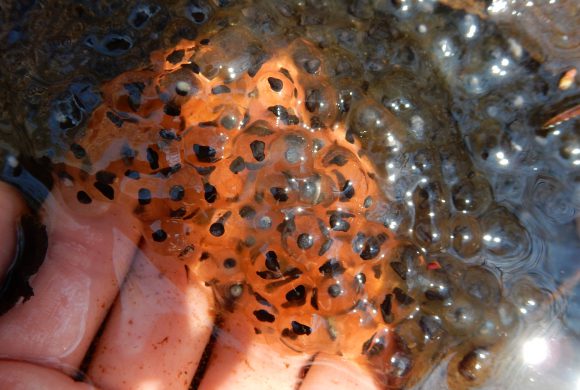
Pollution Reduction Ability
Results of this study showed a direct correlation between headwater wetland water quality and watershed condition. Water quality analysis showed that headwater wetlands effectively reduced pollutants in downstream waters and that stream water quality, wetland condition, and watershed condition were all positively correlated. Interestingly, lower quality headwater wetlands showed a greater capacity for reducing pollutants than higher quality wetlands. Headwater wetlands still maintained the ability to filter pollutants even when impacted by human disturbance. Wetland areas contained significantly more nutrients and metals than surrounding uplands. Levels of certain toxic metals (magnesium, copper, and zinc) were also higher in lower quality wetland and wetland buffer soils, and were higher in the Piedmont soils than those in the Coastal Plain.
Water Levels
Headwater wetlands have pockets that are inundated or saturated during the wet season, which is November to May. Surface water in many headwater wetlands dries up during the growing season due to evapotranspiration and warmer temperatures. Headwater wetlands may lose their surface connection to downstream waters during drier seasons, but it is unlikely that the groundwater connection is lost, as evidenced by the fact that most headwater wetlands in this study continued to have measurable water in shallow groundwater levels throughout the growing season.
Even though surface water sometimes disappeared from the wetlands, the water table was within a foot of the surface for an average of three quarters of the growing season (75% and 72% for Coastal Plain and Piedmont sites respectively). (Note: This was not necessarily consecutive days.) The headwater wetland water tables were within a foot of the surface during less of the growing season for urban sites (62%) than natural sites (84%). Hydrological analysis showed that headwater wetlands located in urban watersheds tended to have flashier hydroperiods than wetlands located in natural watersheds.
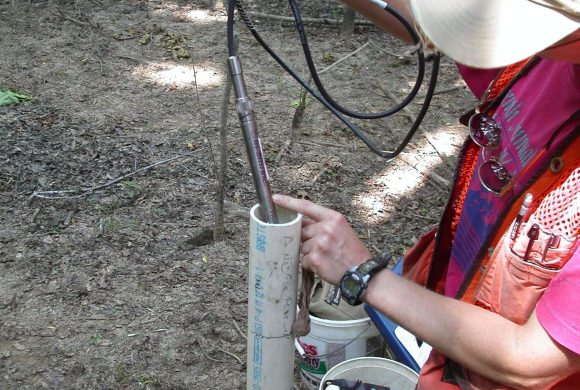 Wells in PVC pipes were temporarily installed in headwater wetlands to monitor water levels, above and below ground.
Wells in PVC pipes were temporarily installed in headwater wetlands to monitor water levels, above and below ground.Rapid Assessments
Correlation analyses were run to determine if significant correlations existed between wetland ORAM and watershed LDI scores and wetland water quality parameters. Fecal coliform, magnesium, and nitrate/nitrite were significantly correlated with disturbance measures (positively correlated with LDI and negatively correlated with ORAM scores). Ammonia, calcium, specific conductivity, and zinc in water samples were negatively correlated with ORAM scores.
Reference
Brown, M.T. and M.B. Vivas. 2003. A Landscape Development Intensity Index. Center for Environmental Policy, Department of Environmental Engineering Sciences, University of Florida. Technical Report Submitted to the Florida Department of Environmental Protection.
This work was funded by US Environmental Protection Agency grant CD 974260 and matching funds from the NC Department of Environment and Natural Resources (renamed to NC Department of Environmental Quality)

